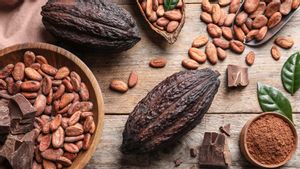The beautiful city of Mysore lends its name to many brands and products in India. The flagship Mysore silk and fragrant Mysore sandal beauty products are traditional favourites. The famous Mysore Pak, a sweet created in the royal kitchens of the Wodeyars. The most famous export remains Mysore Masala Dosa—a fiery variant of the masala dosa with red chutney smeared over the crispy Indian crepe—a version found on the menus of most South Indian restaurants.
The Hero of Mysore Masala Dosa
The flaming red chutney smeared on the inside comes as a zingy surprise for first-timers digging into its belly for the familiar potato filling. It is this red, chilli-garlic paste that makes the Mysore Masala Dosa truly special. Like British yoga student Laura Farrier, the sizzle on your tongue comes as a bolt from the blue for newbie fans of this dosa. Before Mysore, she had been in Kerala where she was on a regular diet of Masala Dosas. “When I asked them what the red chilli paste was doing on my dosa, they told me it was the special Mysore Masala Dosa!” recalls Farrier.
“The Mysore Masala Dosa is special because around 50 years ago, the local restaurants made a red chutney with chillies and garlic. They applied it on the freshly-poured thick dosa batter. Then they fixed the potato palya inside and simply folded it in half,” says Anu Ganesh, a local who runs Anu’s Cafe in the city’s Gokulam area.
Twist in the Tale
Unlike in other south Indian towns and cities, in Mysore, chutney does accompany your dosa but you won’t find any sambar here. This chutney is a paste of roasted chana ground with coconut. “Sambar did not accompany the Mysore Masala Dosa until the Kamat restaurants came into the scene with their crispy paper-thin dosas dripping with vegetable lard,” adds Ganesh.
Another distinct quality of the Mysore Masala Dosa is that, unlike the traditional dosa, it is crispy on the outside but slightly spongy on the inside. The other dosas in South Karnataka are crisper and have a subtle sweetness unlike those from Kerala or Tamil Nadu, where a hint of sourness from the batter is conspicuous, and the crepes are a tad slack.
Dosa shades of brown
You will find dosas in all shades of brown in the rest of south India, starting with off-white to light and dark brown. But the Mysore Masala Dosa always has a standard shade of dark brown.
Some seasoned home cooks believe that Mysore restaurants add sugar to the dosa batter for its brown colour and signature crispiness. However, this claim couldn’t be verified. The potato used for the filling is boiled to a buttery consistency and then mashed with a generous helping of onion and some more ingredients. After placing the masala neatly in the centre of the dosa, it is folded in half and not rolled, as you’ll find in most places outside Mysore.
Migration of the Mysore Masala Dosa
How did the Mysore Masala Dosa travel out of its home town and place itself firmly as a much-loved staple on the South Indian menu across India? Mysoreans attribute this to some famous restaurant chains like Kamat, which featured the dosa on their Bengaluru menu. From here, it seems to have travelled to other metros like Mumbai and Delhi followed by other cities and towns.
The dosa has undoubtedly earned a colourful and fiery reputation along the way. “If you go to Udupi, along coastal Karnataka, the masala dosa looks and tastes completely different,” notes Sachin S of Royal Mysore Walks that conducts heritage walking tours of the city. He adds that the Mysore Masala Dosa stood out because of its distinct South Karnataka flavours.
Then again, one will find two variants within the city. “In the first type, common to all of south Karnataka, the dosa is smaller yet thicker and has the standard potato-onion filling inside. GTR (Gayathri Tiffin Room) has one of the better versions of this dosa here in Mysore. The second type, unique to Mysore city, has mix-veg saagu (thick curry). Mylari is famous for this variety,” informs Krishna MV, a Mysore local.
Taste the fire of Mysore
So where should you head to sample the authentic Mysore Masala Dosa? Mylari, with its two outlets run by brothers in Nazarbad is the most famous dosa joint in Mysore. The family that started it makes a signature batter, which is said to be a closely guarded family secret. The dosa restaurant opens early in the morning and closes when the batter is over, which is often quick.
Apart from Mylari, other iconic restaurants serve the masala dosa. You can head to Gayatri Tiffin Room, famously known as GTR and Hotel Dasaprakash. Locals also recommend Ramya Hotel in Hinkal and Guru Hotel in Nazarbad. Another must-visit is the Dosa Point which has many branches in the city. However, the one on Sayyaji Rao Road comes highly recommended.





